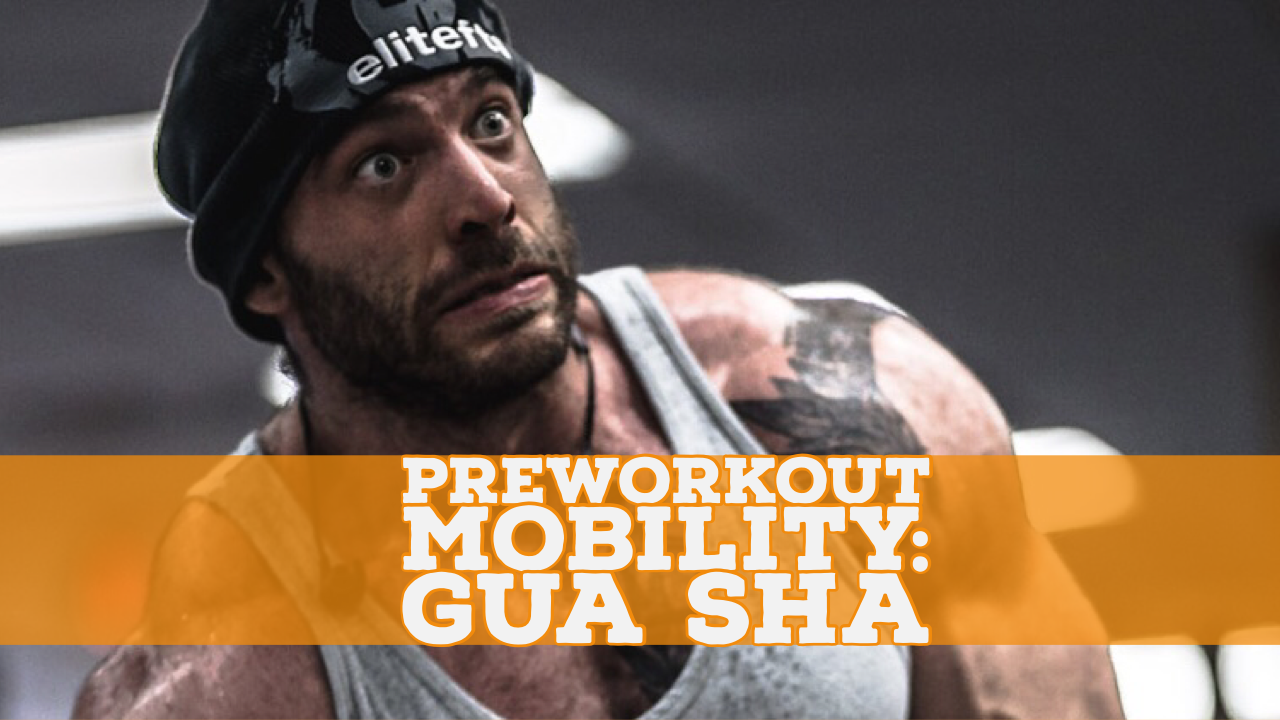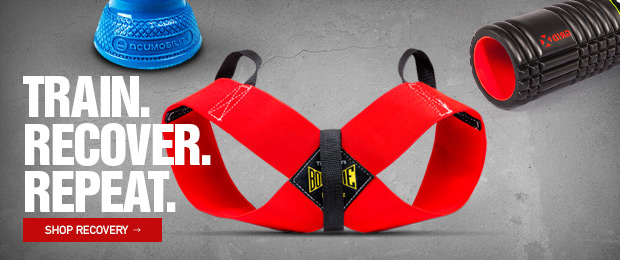
I love talking about the little nuances of strength training. I’m really big on the details, and I believe they can make a big difference! In this article, I want to focus on one aspect of my preworkout ritual and warmup: gua sha.
If you’re not already familiar with gua sha , I highly suggest that you start by watching the video above. But basically, gua sha is a form of instrument-assisted soft tissue mobilization, or IASTM, that has been practiced in Eastern cultures for centuries. At a high level, it simply involves scraping the target muscle with a specialized tool, like the Echo from Sidekick Tools (linked in the video above). However, unlike other forms of IASTM like Graston, gua sha is a bit gentler (and doesn’t require an expensive certification). That makes it a useful pre-training modality, when practiced appropriately.
Why Gua Sha Works Before Training
In theory, gua sha can help to heal a variety of physical maladies by loosening muscle fascia. This is a very similar mechanism to that associated with trigger point therapy or ART, foam rolling, and similar soft tissue modalities. However, while foam rolling and ART can be pretty intense, uncomfortable forms of pre- or rehab, gua sha generally requires just light or moderate pressure to be effective. While it’s still going to help bring blood flow to the treated area, it won’t beat you up or wear you out like the former examples might.
“Light to moderate pressure” is key when using gua sha prior to training. Too much pressure, especially when applied with metal tools, can be detrimental or distracting, and require a day or more of rest before the treated muscle feels 100%. If you’ve received gua sha therapy from a professional practitioner, you may have experienced the mottled bruising, or petechiae, that looks kind of like a rash.
That’s not what we want prior to training, although you still may experience some light, temporary discoloration of the skin even with light pressure.
There’s another caveat: while gua sha is a great component of a proper strength-training warmup, it’s not sufficient in and of itself. Make sure to complement your gua sha practice with a light cardiovascular warmup, and a movement-specific warmup, in addition to any other warmup techniques you find helpful (such as dynamic stretching).
How to Perform Preworkout Gua Sha
The good thing about gua sha is that finding the proper tools to use is probably the hardest part. I prefer to use the Sidekick Echo, as I mentioned above, because its shape fits my body well, and the non-stick sides help me to apply the proper amount of pressure even when my hands are greasy from applying liniment or cream before treatment. But you don’t need a fancy tool — honestly, a butter knife can work, or even a $25 jade piece set from Amazon (just be careful not to drop it)!
Speaking of liniment or cream, these are essential if you want to do anything other than irritate your skin! I use Muscle Cream from Extract Labs, which, in addition to helping the instrument to glide more smoothly over the muscle surface, also contains CBD extracts to reduce inflammation and promote healing. (I’ll be writing more about my experiences with CBD in a future article!)
Once you’ve got your tools, the process is simple. You generally want to scrape “downstream”, or away from a problematic joint, rather than use a back-and-forth motion, but in my experience, the difference is fairly small. There’s also no one right answer when it comes to which muscles to scrape. I generally just hit all the major muscle groups I’ll be using in a particular session, and make sure to also scrape muscles that might contribute to referred pain. For example, a tight rotator cuff can contribute to shoulder pain, so if I’m training pressing movements, I’ll make sure to target my rotator cuff area and upper lats in addition to the shoulders themselves.
Finally, I suggest performing your pre-workout gua sha before the rest of your warmup. Again, this is simply because the feeling of gua sha can be a little distracting at first, and I prefer to give myself as long as possible to adjust to that feeling before jumping into heavy movements.
One last note here: please don’t assume gua sha is a “must” in your warmup routine. It’s a technique I find extremely useful, and I do strongly suggest you give it a shot. But it’s not mandatory. Far more important is finding a warmup routine that works for you. That means considering the amount of time you have to warm up, how heavy your training will be, and how healthy your body is. There are no right answers in the strength game, so don’t box yourself into one solution. Stay open minded, try new things, keep what works and drop what doesn’t.
And of course, remember to always Think Strong and Train Hard!









